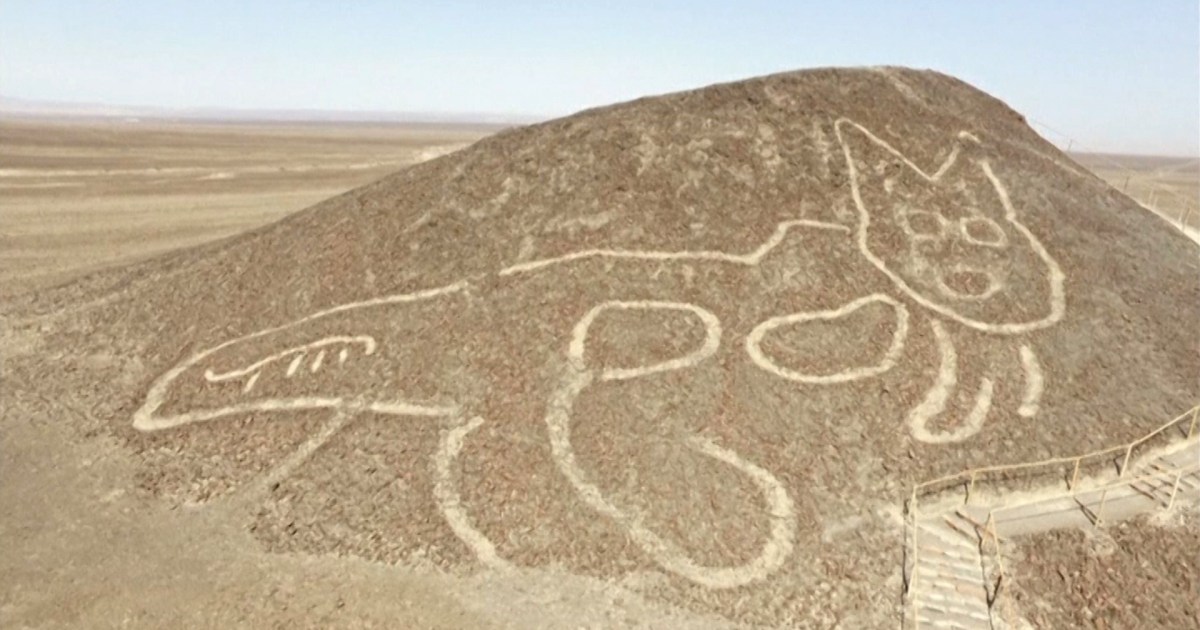A giant cat drawing of a cat dating back to about 200-100 BC was discovered in the Nazca Desert in Peru during excavations in the region.
In a report published by the British newspaper "The Guardian", Sam Jones said that sand dunes in the Nazca desert (southern Peru), where centuries-old rock inscriptions of shapes such as a hummingbird, monkey and orca whale, revealed the drawing of a giant cat.
The Giant Cat Engraving, which dates back to about 200-100 BC, appeared during work to improve the entrance to a hillside, which features a stunning natural view through which many Nazca carvings can be seen.
The author stated that the Nazca inscriptions, which have been classified as a UNESCO World Heritage Site since 1994, and which consist of hundreds of geometric and animal shapes, were excavated by removing rocks and sand to show the contrast in the materials beneath them.
These drawings are located 400 kilometers (south of the Peruvian capital) Lima, and cover about 450 square kilometers of the coastal plains of Peru.
According to a statement issued by the Peruvian Ministry of Culture this week, "the drawing was barely visible and on the verge of disappearing due to its location on a steep hill, which makes it vulnerable to the natural effects of erosion. Last week, the geoglyph was cleaned and preserved."
According to the report, the cat was drawn to a length of 37 meters, with precisely defined lines ranging from 30 to 40 cm wide.

